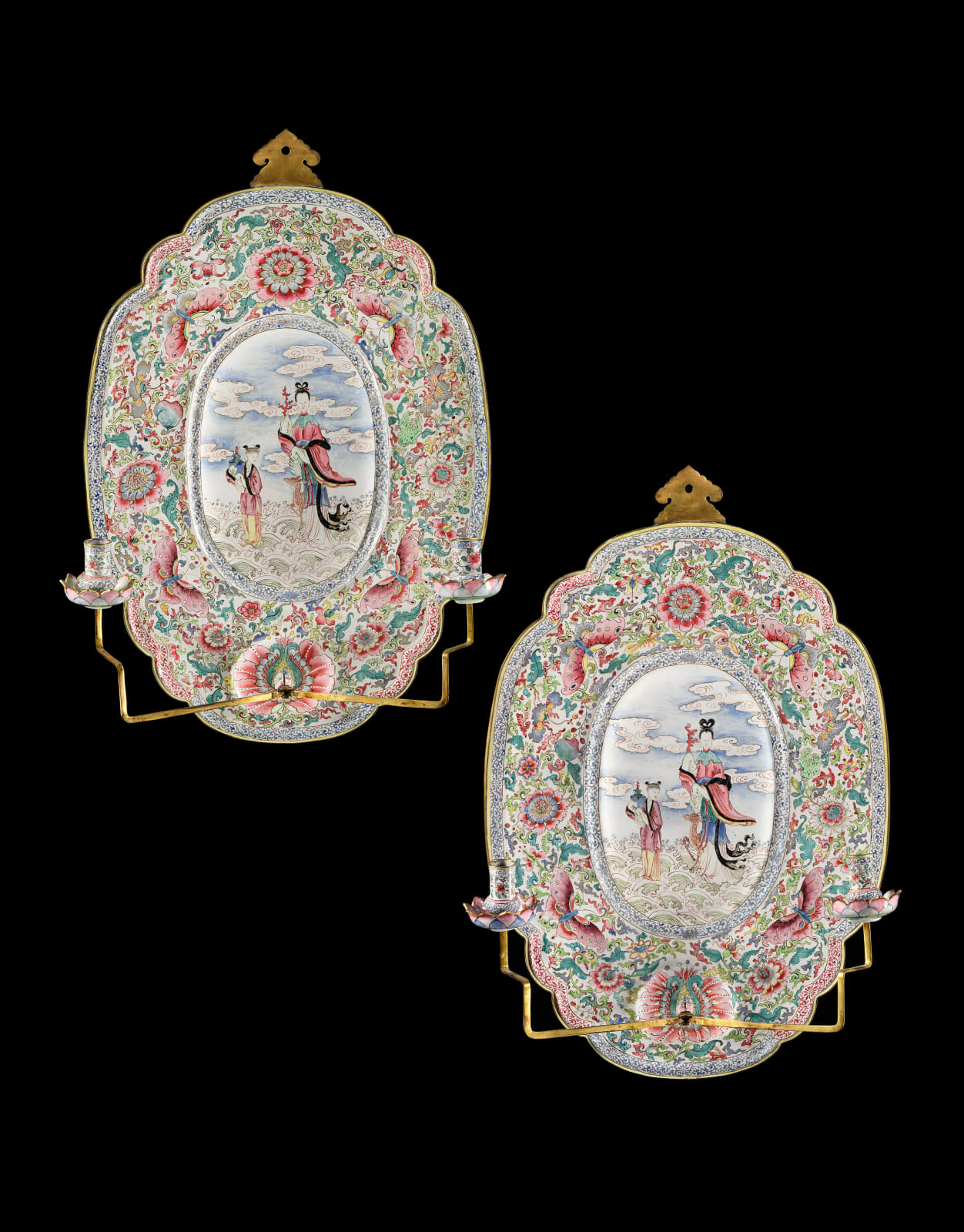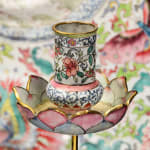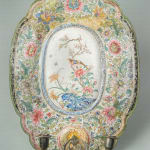A PAIR OF FAMILLE ROSE ENAMEL SCONCES
W: 14.5” / 37cm
Further images
Literature
T. B. Arapova, Transactions of the Oriental Ceramic Society, Vol. 81, pp. 55-6, fig. 9
Jenyns, S., Watson, W., Chinese Art, The Minor Arts (London, 1963), p. 264, fig. 123
Hodacs, Hanna, Silk and Tea in the North (London, 2016)
Jan Wirgin, Från Kina till Europa, Östasiatiska Museet (Stockholm, 1998), pp. 238-46
An extremely rare pair of Qing dynasty, Qianlong period famille rose enamel sconces, the central cartouche depicting the Daoist Immortal Magu standing on crashing waves and dressed in long flowing robes, a deer and an attendant to her side, within a dense border of butterflies and large stylised blooms on leafy scrolls, a central flower head at the base issuing a pair of candle arms connecting the original candle nozzles and drip-pans
The technique of painted enamels is believed to have been introduced to China by Jesuit missionaries in the eighteenth century. These prized works of art were made both for the Emperor and for export to the West. Tatiana B. Arapova writes in Transactions of the Oriental Ceramic Society, Vol. 81, 2016-17, p. 55, that the Dutch East India Company placed their first order for painted enamels in 1766. She cites Professor Jorg's research that from the 1760s painted enamels were listed at the large Amsterdam porcelain shop of Martha Raap, including wall scones for two candles.
This pair can be compared to the pair of wall scones from Anichkov Palace, residence of Emperor Alexander III and Maria Feodorovna, now in the Hermitage Collection, St Petersberg, illustrated op. cit., fig. 9, p. 56. R. Soame Jenyns and William Watson write in Chinese Art, The Minor Arts (London, 1963), p. 264, that 16 painted enamel wall scones, a pair of painted enamel candelabra (illus. fig. 123, p. 264), a bureau and a mirror frame were ordered by the supercargo Lintrup of the Danish Asiatic Company in 1740 from Canton.
Christian Jensun Lintrup become the head of the Danish Asiatic company during the mid eighteenth century. It is estimated he made five journeys to canton and became known as the ‘Chinese Merchant’ in Copenhagen as his wealth accumulated.
Sophie Magdalene of Brandenburg-Kulmbach, Queen Consort of Denmark wife of Christian VI was an avid collector of enamelled porcelain. In 1738 a set of twelve Canton famille rose enamel bracket lights. The Supercargo Lintrup of the Danish company also transported 16 sconces, a Candelabrum and a mirror frame in Cantonese enamel from Canton 1740. It is possible that these wall sconces were part of this very shipment, as the design of lotus decoration candlestick holders are identical to the candelabra.
Maria Feodorovna (Princess Dagmar) born of dainish royalty in 1847 went on to marry Emperor Alexander III and brought a collection of oriental objects inherited from her family from Denmark to Russia, some of which are exhibited in the State Hermitage museum today.









